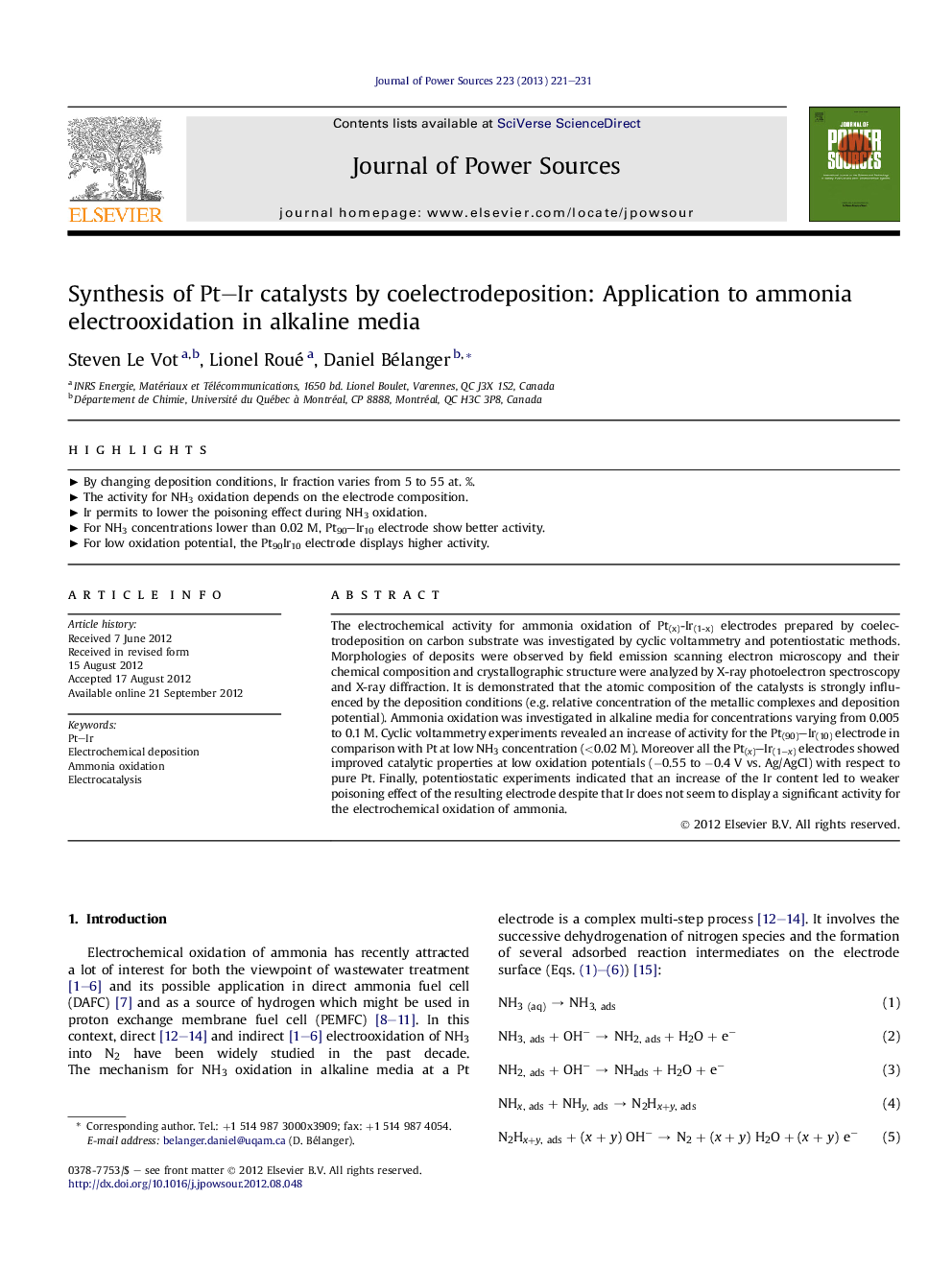| Article ID | Journal | Published Year | Pages | File Type |
|---|---|---|---|---|
| 1287661 | Journal of Power Sources | 2013 | 11 Pages |
The electrochemical activity for ammonia oxidation of Pt(x)-Ir(1-x) electrodes prepared by coelectrodeposition on carbon substrate was investigated by cyclic voltammetry and potentiostatic methods. Morphologies of deposits were observed by field emission scanning electron microscopy and their chemical composition and crystallographic structure were analyzed by X-ray photoelectron spectroscopy and X-ray diffraction. It is demonstrated that the atomic composition of the catalysts is strongly influenced by the deposition conditions (e.g. relative concentration of the metallic complexes and deposition potential). Ammonia oxidation was investigated in alkaline media for concentrations varying from 0.005 to 0.1 M. Cyclic voltammetry experiments revealed an increase of activity for the Pt(90)–Ir(10) electrode in comparison with Pt at low NH3 concentration (<0.02 M). Moreover all the Pt(x)–Ir(1−x) electrodes showed improved catalytic properties at low oxidation potentials (−0.55 to −0.4 V vs. Ag/AgCl) with respect to pure Pt. Finally, potentiostatic experiments indicated that an increase of the Ir content led to weaker poisoning effect of the resulting electrode despite that Ir does not seem to display a significant activity for the electrochemical oxidation of ammonia.
► By changing deposition conditions, Ir fraction varies from 5 to 55 at. %. ► The activity for NH3 oxidation depends on the electrode composition. ► Ir permits to lower the poisoning effect during NH3 oxidation. ► For NH3 concentrations lower than 0.02 M, Pt90–Ir10 electrode show better activity. ► For low oxidation potential, the Pt90Ir10 electrode displays higher activity.
